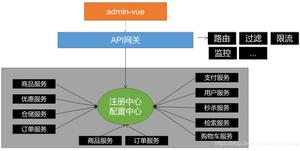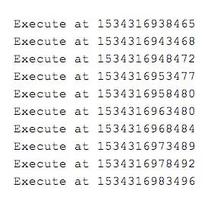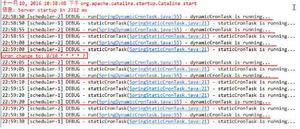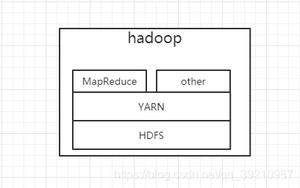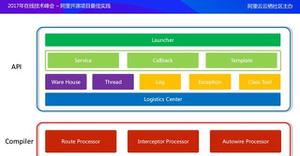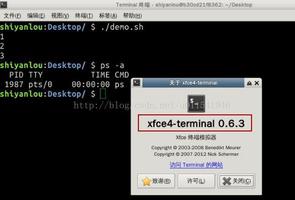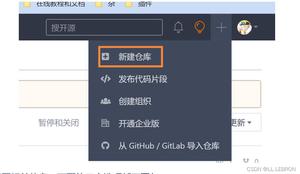Spring.NET学习笔记9——打造简易的依赖注入框架(练习篇) Level 100
本文内容纲要:Spring.NET学习笔记9——打造简易的依赖注入框架(练习篇) Level 100
我们在第三篇中学习里一个简易的IoC框架。今天我们接着上次的程序,实现带参数构造函数对象的实例和属性的注入 。
我们知道可以通过反射获取类的构造函数及参数(GetConstructors方法);可以获取属性和属性的类型(GetProperties方法)。通过Activator的CreateInstance(Type type, params object[] args)方法可以创建带参数构造函数的实例。通过SetValue方法可以给属性赋值,这样一来,我们就上次的代码稍加改造就可以实现属性的注入了。
下面是完成的代码:
Domain
publicclass Person
{
publicstring Name { get; set; }
publicint Age { get; set; }
}
publicclass PersonDao
{
privateint intProp;
public PersonDao(int intProp)
{
this.intProp = intProp;
}
public Person Entity { get; set; }
publicoverridestring ToString()
{
return"构造函数参数intProp为:"+this.intProp;
}
}
ObjectFactory
publicclass ObjectFactory
{
private IDictionary<string, object> objectDefine =new Dictionary<string, object>();
private ObjectFactory(string fileName)
{
InstanceObjects(fileName); // 实例IoC容器
DiObjects(fileName); // 属性注入
}
privatestatic ObjectFactory instance;
privatestaticobject lockHelper =newobject();
publicstatic ObjectFactory Instance(string fileName)
{
if (instance ==null)
{
lock (lockHelper)
{
instance = instance ??new ObjectFactory(fileName);
}
}
return instance;
}
/**////
/// 实例IoC容器
///
///
privatevoid InstanceObjects(string fileName)
{
XElement root = XElement.Load(fileName);
var objects = from obj in root.Elements("object")
select obj;
//无参构造函数
objectDefine = objects.Where(obj =>
obj.Element("constructor-arg") ==null).ToDictionary(
k => k.Attribute("id").Value,
v =>
{
string typeName = v.Attribute("type").Value;
Type type = Type.GetType(typeName);
return Activator.CreateInstance(type);
}
);
//有参构造函数
foreach (XElement item in objects.Where(obj =>
obj.Element("constructor-arg") !=null))
{
string id = item.Attribute("id").Value;
string typeName = item.Attribute("type").Value;
Type type = Type.GetType(typeName);
var args = from property in type.GetConstructors()[0].GetParameters()
join el in item.Elements("constructor-arg")
on property.Name equals el.Attribute("name").Value
select Convert.ChangeType(el.Attribute("value").Value,
property.ParameterType);
object obj = Activator.CreateInstance(type, args.ToArray());
objectDefine.Add(id, obj);
}
}
/**////
/// 属性注入
///
///
privatevoid DiObjects(string fileName)
{
XElement root = XElement.Load(fileName);
var objects = from obj in root.Elements("object")
select obj;
foreach (KeyValuePair<string,object> item in objectDefine)
{
foreach (var el in objects.Where(e =>
e.Attribute("id").Value == item.Key).Elements("property"))
{
Type type = item.Value.GetType();
//获取属性
foreach (PropertyInfo property in type.GetProperties())
{
if (property.Name == el.Attribute("name").Value)
{
if (el.Attribute("value") !=null)
{
//设置属性值
property.SetValue(item.Value,
Convert.ChangeType(el.Attribute("value").Value,
property.PropertyType), null);
}
elseif (el.Attribute("ref") !=null)
{
object refObject =null;
if (objectDefine.ContainsKey(el.Attribute("ref").Value))
{
refObject = objectDefine[el.Attribute("ref").Value];
}
//设置关联对象属性
property.SetValue(item.Value, refObject, null);
}
}
}
}
}
}
/**////
/// 获取对象
///
///
///
publicobject GetObject(string id)
{
object result =null;
if (objectDefine.ContainsKey(id))
{
result = objectDefine[id];
}
return result;
}
}
App.config
Program
class Program
{
staticvoid Main(string[] args)
{
ObjectFactory factory = ObjectFactory.Instance(@"F:\Exercise\SpringNet\Step1\SpringNet_Lesson9\SpringNetMyDi\Objects.xml");
PersonDao dao = (PersonDao)factory.GetObject("personDao");
Console.WriteLine("姓名:"+ dao.Entity.Name);
Console.WriteLine("年龄:"+ dao.Entity.Age);
Console.WriteLine(dao);
Console.ReadLine();
}
}
输入结果:
代码下载
返回目录
本文内容总结:Spring.NET学习笔记9——打造简易的依赖注入框架(练习篇) Level 100
原文链接:https://www.cnblogs.com/GoodHelper/archive/2009/11/02/SpringNet_MyDi.html
以上是 Spring.NET学习笔记9——打造简易的依赖注入框架(练习篇) Level 100 的全部内容, 来源链接: utcz.com/z/362624.html

